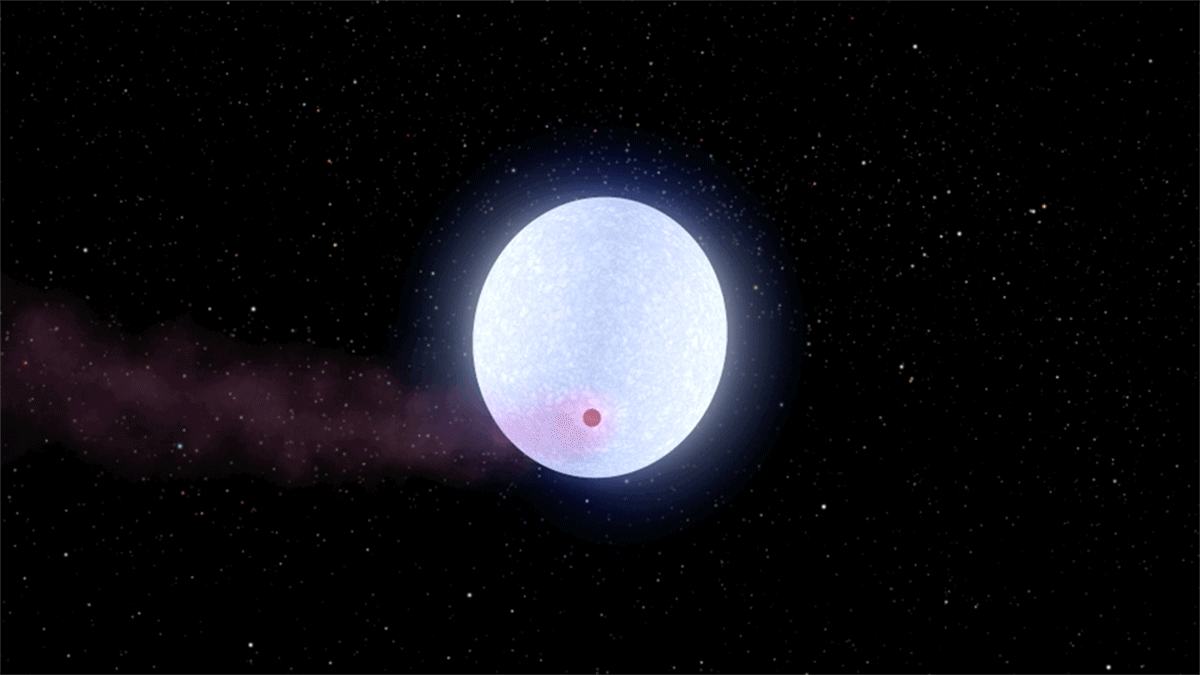Fox News Flash top headlines for Jan. 27
Fox News Flash top headlines for Jan. 27 are here. Check out what's clicking on Foxnews.com
Since the first exoplanet was discovered in 1992, nearly 4,000 other planets have been discovered outside the solar system. The newly discovered KELT-9b is unlike any other planet to come before it, however.
It's so hot it's tearing itself apart.
Discovered with NASA’s Spitzer space telescope, KELT-9b has a mass three times that of Jupiter and a surface temperature of 7,800 degrees Fahrenheit. Not only is it the hottest planet discovered so far (hotter than some stars even), the heat is so intense that hydrogen gas molecules are likely being "ripped apart" on the dayside part of the planet, only to reform once they move around to the nightside part, NASA said.

Artist's rendering of a "hot Jupiter" called KELT-9b, the hottest known exoplanet - so hot, a new paper finds, that even molecules in its atmosphere are torn to shreds. Credit: NASA/JPL-Caltech
'ORANGE DWARFS' COULD BE BEST PLACE IN UNIVERSE TO LOOK FOR ALIENS
"This kind of planet is so extreme in temperature, it is a bit separate from a lot of other exoplanets," said Megan Mansfield, the study's lead author, in the statement. "There are some other hot Jupiters and ultra-hot Jupiters that are not quite as hot but still warm enough that this effect should be taking place."
KELT-9b, first discovered in 2017, is firmly in the inhabitable zone of its star as it only takes 1.5 days to orbit its star, NASA added. "That means the planet is tidally locked, presenting one face to its star for all time (as our Moon presents only one face to Earth). On the far side of KELT-9b, nighttime lasts forever."
The temperature difference between the day and nightside on the planet is not that large and it's unclear why the planet's "hot spot" was shifted away from where scientists thought it would be.
Additional computer models and more research is needed to understand how the radiation and flow balance of exoplanet atmospheres, and in particular KELT-9b, balance out and understand this phenomenon.
NEARBY SUPER-EARTH' MAY BE HABITABLE, NASA SUGGESTS
"If you don't account for hydrogen dissociation, you get really fast winds of [37 miles or] 60 kilometers per second," Mansfield added. "That's probably not likely."
The research has been published in Astrophysical Journal Letters.
KELT-9b may not be habitable, but scientists believe orange dwarfs, also known as "Goldilocks stars," could be the best place in the universe to look for life, given their abundance and stability.